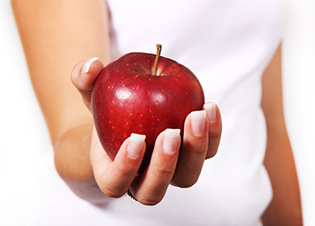

According to a Boston Medical Center study, 45 million Americans go on a diet each year. Whether it's Atkins, Dukan, or Paleo, how well are those diets really working? Most dieters will be able to keep up the eating plan for a few weeks, maybe a few months if they're lucky. But as their bodies start to crave the foods and nutrients eliminated by the diet they chose, it's a slippery slope back to old eating habits and those not-so-skinny jeans.
Yes, these fad diets are tempting. They promise quick weight loss by restricting one or two types of food. When sticking to a plan that pays attention only to nutrition, there is no pressure to exercise or cook at home. Instead, dieters end up slipping back into their old eating habits and regaining the weight they lost after quitting the diet. According to a study from UCLA, up to two-thirds of people who try these diets regain the weight they had lost. So how can you break this vicious cycle of yo-yo dieting? Ditch the fads and make lasting behavioral changes that will lead to long-term weight loss.
How to spot a fad diet
The telltale sign of a fad diet is that it eliminates a major food group from your life completely or focuses solely on one food or food group ignoring all others. Fad diets that promise a quick fix often promise minimal effort. That's what makes them so appealing. Dieters don't have to make big changes like being more active or planning what to cook. They simply give up one thing to see fast results.
What makes them unhealthy?
Most fad diets don't provide all the vitamins and nutrients needed on a daily basis. It's for this very reason that fad diets are also hard to stick to. The body will start to crave those missing nutrients and before long those bad eating habits will return. There's a reason each food group is represented on the USDA's MyPlate eating chart, which replaced the food pyramid a couple of years ago. Plus, talk about forbidden fruit. Knowing a food is off limits generally makes it that much more appealing.
What's the key to ditching diets for good?

The short answer: Adopt one healthy habit at a time. Changing day-to-day behaviors is the best way to make weight loss last long term and put an end to yo-yo dieting. The good news is that building new habits sounds more daunting than it really is. There's no need to change everything in one fell swoop. In fact, that belief is the opposite of how weight loss should be approached. Instead, making small, gradual changes will help decrease calories and kickstart weight loss. Start by choosing one new daily habit to incorporate and try it out for a week. Seven days is long enough to acclimate to the behavior and find out how it fits into an existing lifestyle, but it's not so long that it's daunting. For those having trouble making the habit stick, try setting calendar reminders or by enlisting a friend or family member to help. The first healthy habit should be one that makes a big impact to help boost motivation. According to Amy Margulies, lead registered dietitian at Retrofit, the following three habits will kickstart weight loss efforts. Just remember -- take them one at a time.
- Eat a healthy breakfast: Numerous studies have shown that eating a healthy breakfast helps promote weight loss. Breakfast should account for one quarter of the calories consumed each day. So if someone is aiming to consume 1,200 calories, an ideal breakfast would be approximately 300 calories. Like other meals, breakfast should follow the 25-25-50 rule, which means it should consist of 25 percent whole grains, 25 percent lean protein, and 50 percent fruit or vegetable. Avoid pre-packaged foods for a healthier start to the day. Whole foods like fresh fruit, oatmeal, low-fat Greek yogurt, or low-fat, low-salt turkey bacon are smarter choices. Not only will eating breakfast help avoid overeating later in the day, it makes it much easier to concentrate on the agenda during that pre-lunch meeting.
Fad diets might be appealing to quickly shed pounds, but they don't lead to lasting weight loss. The key to reaching a healthy weight and staying there is banishing those bad habits and replacing them with healthy, long-lasting routines.